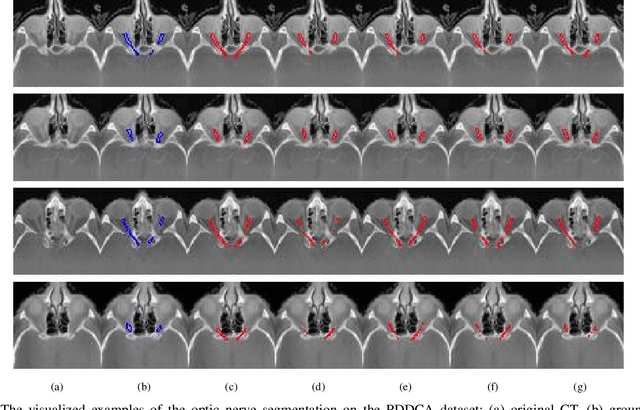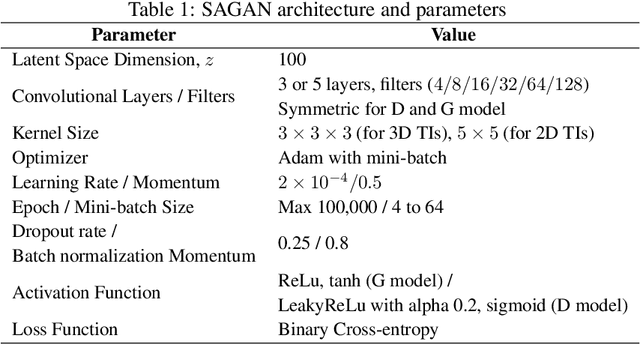Sung Eun Kim
ReXTrust: A Model for Fine-Grained Hallucination Detection in AI-Generated Radiology Reports
Dec 17, 2024Abstract:The increasing adoption of AI-generated radiology reports necessitates robust methods for detecting hallucinations--false or unfounded statements that could impact patient care. We present ReXTrust, a novel framework for fine-grained hallucination detection in AI-generated radiology reports. Our approach leverages sequences of hidden states from large vision-language models to produce finding-level hallucination risk scores. We evaluate ReXTrust on a subset of the MIMIC-CXR dataset and demonstrate superior performance compared to existing approaches, achieving an AUROC of 0.8751 across all findings and 0.8963 on clinically significant findings. Our results show that white-box approaches leveraging model hidden states can provide reliable hallucination detection for medical AI systems, potentially improving the safety and reliability of automated radiology reporting.
FactCheXcker: Mitigating Measurement Hallucinations in Chest X-ray Report Generation Models
Nov 27, 2024



Abstract:Medical vision-language model models often struggle with generating accurate quantitative measurements in radiology reports, leading to hallucinations that undermine clinical reliability. We introduce FactCheXcker, a modular framework that de-hallucinates radiology report measurements by leveraging an improved query-code-update paradigm. Specifically, FactCheXcker employs specialized modules and the code generation capabilities of large language models to solve measurement queries generated based on the original report. After extracting measurable findings, the results are incorporated into an updated report. We evaluate FactCheXcker on endotracheal tube placement, which accounts for an average of 78% of report measurements, using the MIMIC-CXR dataset and 11 medical report-generation models. Our results show that FactCheXcker significantly reduces hallucinations, improves measurement precision, and maintains the quality of the original reports. Specifically, FactCheXcker improves the performance of all 11 models and achieves an average improvement of 94.0% in reducing measurement hallucinations measured by mean absolute error.
Supervised Segmentation with Domain Adaptation for Small Sampled Orbital CT Images
Jul 01, 2021



Abstract:Deep neural networks (DNNs) have been widely used for medical image analysis. However, the lack of access a to large-scale annotated dataset poses a great challenge, especially in the case of rare diseases, or new domains for the research society. Transfer of pre-trained features, from the relatively large dataset is a considerable solution. In this paper, we have explored supervised segmentation using domain adaptation for optic nerve and orbital tumor, when only small sampled CT images are given. Even the lung image database consortium image collection (LIDC-IDRI) is a cross-domain to orbital CT, but the proposed domain adaptation method improved the performance of attention U-Net for the segmentation in public optic nerve dataset and our clinical orbital tumor dataset. The code and dataset are available at https://github.com/cmcbigdata.
Fast and Scalable Earth Texture Synthesis using Spatially Assembled Generative Adversarial Neural Networks
Nov 13, 2020



Abstract:The earth texture with complex morphological geometry and compositions such as shale and carbonate rocks, is typically characterized with sparse field samples because of an expensive and time-consuming characterization process. Accordingly, generating arbitrary large size of the geological texture with similar topological structures at a low computation cost has become one of the key tasks for realistic geomaterial reconstruction. Recently, generative adversarial neural networks (GANs) have demonstrated a potential of synthesizing input textural images and creating equiprobable geomaterial images. However, the texture synthesis with the GANs framework is often limited by the computational cost and scalability of the output texture size. In this study, we proposed a spatially assembled GANs (SAGANs) that can generate output images of an arbitrary large size regardless of the size of training images with computational efficiency. The performance of the SAGANs was evaluated with two and three dimensional (2D and 3D) rock image samples widely used in geostatistical reconstruction of the earth texture. We demonstrate SAGANs can generate the arbitrary large size of statistical realizations with connectivity and structural properties similar to training images, and also can generate a variety of realizations even on a single training image. In addition, the computational time was significantly improved compared to standard GANs frameworks.
Connectivity-informed Drainage Network Generation using Deep Convolution Generative Adversarial Networks
Jun 16, 2020



Abstract:Stochastic network modeling is often limited by high computational costs to generate a large number of networks enough for meaningful statistical evaluation. In this study, Deep Convolutional Generative Adversarial Networks (DCGANs) were applied to quickly reproduce drainage networks from the already generated network samples without repetitive long modeling of the stochastic network model, Gibb's model. In particular, we developed a novel connectivity-informed method that converts the drainage network images to the directional information of flow on each node of the drainage network, and then transform it into multiple binary layers where the connectivity constraints between nodes in the drainage network are stored. DCGANs trained with three different types of training samples were compared; 1) original drainage network images, 2) their corresponding directional information only, and 3) the connectivity-informed directional information. Comparison of generated images demonstrated that the novel connectivity-informed method outperformed the other two methods by training DCGANs more effectively and better reproducing accurate drainage networks due to its compact representation of the network complexity and connectivity. This work highlights that DCGANs can be applicable for high contrast images common in earth and material sciences where the network, fractures, and other high contrast features are important.
 Add to Chrome
Add to Chrome Add to Firefox
Add to Firefox Add to Edge
Add to Edge